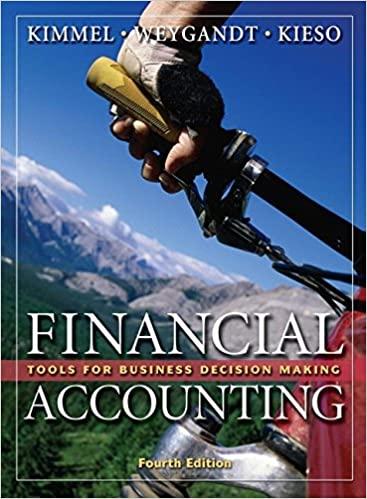There are 4 data sets for you to analyze from two different streams (Mercer Creek and Green River) located in the Seattle, Washington area. Each data set spans 11 years of record along the stream. Use these data sets to estimate the likely discharge for a 100-year flood for each 11-year period. You should follow this procedure: 1. For each data set, rank the peak flood discharge in order of magnitude, starting with 1 for the largest and ending with 11 for the smallest. Write these results in the "Rank" column of the table that follows. 2. Use the formula (T= (n+1)/m) to determine the recurrence interval (1) of each of the 11 floods in each of the two data sets where n is the number of years of data and m is the rank of the flood. The results should be recorded in the "Recurrence Interval" column of the table. 3. Make two plots of the Recurrence Intervals and discharge for the 11 floods in each of your data sets, one for the Mercer Creek Data sets and one for the Green River Data sets. Plot the recurrence intervals on the horizontal axis (use a logarithmic axis scale) and the discharge on the vertical axis (use a linear axis scale). Choose a vertical scale so that the numbers you plot from your data fill about one-half of the length of the vertical axis. 4. Using a ruler, draw a best-fit straight line through the data points for the Data Set 1. The line should be extended all the way to the right side edge of the graph to 100 years. Do the same for Data Set 2. 1. Based on your data, what is the predicted discharge for a 100-year flood? To find this information, you must read the value from your graph where it intersects the 100 vr recurrence interval line. Data Sets Predicted discharge for a 100 year flood Mercer Creek - Data Set 1 (1957-1967) Mercer Creek - Data Set 2 (1979-1989) Green River - Data Set 1 (1941-1951) Green River - Data Set 2 (1976-1986) 2. How do your predictions for the two streams compare to each other? Remember, you are comparing for the same stream, Data Set 1 and 2. Describe it in words. 3. Suggest possible human activities in the watershed that could have caused the differences in predicted floods that result from the two sets of data for your stream. 4. Based on the flood predictions for all four data sets, what does the contrast in predicted flood discharges imply about the usefulness of the 100-year flood as a legal designation for these two streams? 5. What information do you need to know if you are about to buy a house that is located adjacent to, but just outside the 100-year floodplain? Year Year Mercer Creek - Data Set 1 Peak Flood Rank (1 Recurrence Discharge greatest) interval (ft3/sec) 180 Mercer Creek Data Set 2 Peak Flood Rank (1 = Recurrence Discharge greatest) Interval (ft3/sec) 518 1957 1979 1958 238 1980 414 1959 220 1981 670 1960 210 1982 612 1961 192 1983 404 1962 168 1984 353 1963 150 1985 832 1964 224 1986 504 1965 193 1987 331 1966 187 1988 228 1967 254 1989 664 Year Year Green River Data Set 1 Peak Flood Rank (1 Recurrence Discharge greatest) Interval (13/sec) 9310 Green River Data Set 2 Peak Flood Rank(1 Recurrence Discharge greatest) Interval (14"3/sec) 4490 1941 1976 1942 10900 1977 9920 1943 12900 1978 6450 1944 13600 1979 8730 I 1945 12800 1980 5200 1946 22000 1981 9300 1947 9990 1982 10800 1948 6420 1983 9140 1949 9810 1984 10900 1950 11800 1085 7020 1951 18400 1980 11600










